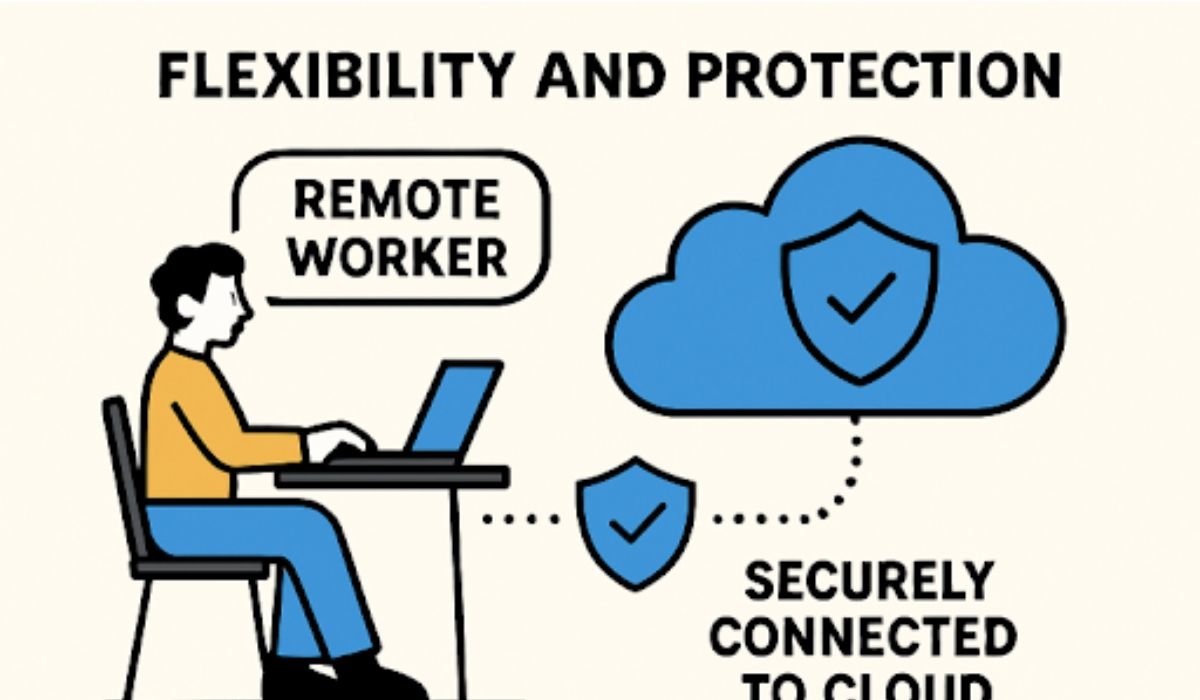Key Takeaways
- Implementing clear BYOD policies is essential to mitigate security risks associated with personal devices.
- Adopting Zero Trust Architecture enhances security by continuously verifying all users and devices.
- Regular employee training on cybersecurity best practices helps prevent potential breaches.
Table of Contents
- Introduction
- The Rise of BYOD
- Security Challenges in Hybrid Work
- Implementing Zero Trust Architecture
- Employee Training and Awareness
- Leveraging Secure Access Service Edge
- Conclusion
As organizations adopt hybrid and remote work models, they are navigating the delicate equilibrium between ensuring top-tier cybersecurity and providing employees with the flexibility they increasingly expect. The push for digital transformation has introduced new opportunities and efficiencies, but also brought heightened risks. Leveraging the right technologies, such as a secure web gateway by Versa, is fundamental in enabling this balance, safeguarding critical information while respecting employee autonomy.
Success in the modern digital workplace depends on implementing robust technical defenses, establishing clear policies, and empowering employees to participate actively in organizational security. Implementing innovative tools and structured processes allows enterprises to adapt to ongoing changes without sacrificing productivity or exposing sensitive data to avoidable threats.
Introduction
The evolution of the digital workplace brings unparalleled flexibility and a complex array of security challenges. Enabled by advancements in cloud computing and collaboration tools, employees can work from anywhere, anytime. However, this freedom requires organizations to rethink their approach to data protection, as cybercriminals increasingly exploit the vulnerabilities inherent in distributed workforces.
According to a report from CSO Online, the proliferation of personally owned devices and SaaS applications outside the corporate firewall significantly expands the attack surface—requiring advanced, adaptive security models.
The Rise of BYOD
Bring Your Own Device (BYOD) has become a defining feature of the modern digital workplace. With more than 44% of employees now using personal phones for work tasks, companies are facing new pressures to formalize BYOD policies. These frameworks should address security expectations, acceptable use, and the technical controls required to protect sensitive information accessed on personal hardware.
The challenge is not just technological—there are also cultural considerations. Employees expect to work on their own devices, valuing the convenience and familiarity this provides. A transparent, consultative approach to BYOD policy creation can help ensure alignment between corporate security needs and employee preferences.
ALSO READ: Protocolo Operacional Padrao: Why Your Business Needs Real Standard Operating Procedures
Security Challenges in Hybrid Work
Hybrid work models have redefined traditional network boundaries, dissolving the once-clear perimeter safeguarding corporate data. With employees now accessing systems from home offices, coffee shops, and co-working spaces, organizations face increased exposure to unsecured networks and vulnerable endpoints. This decentralized environment demands stronger, adaptive security measures that protect data without disrupting employee productivity. IT teams must continually monitor and defend against evolving threats such as phishing attacks, ransomware, and the use of unauthorized applications that bypass corporate controls. According to CSO Online, securing hybrid workforces ranks among the most pressing challenges for modern IT leaders. Addressing this complexity requires an identity-centric, integrated security approach that prioritizes verification, access control, and real-time threat visibility across all devices, users, and environments.
Implementing Zero Trust Architecture
Zero Trust Architecture (ZTA) has become the gold standard for contemporary security frameworks. It is anchored by the principle of “never trust, always verify.” ZTA is especially relevant in hybrid environments, where users and devices are rarely on a trusted, secure network.
Principles of Zero Trust
- Continuous Verification: Every device and user must prove their legitimacy when requesting resource access.
- Least Privilege: Users and apps are granted only what they need, and nothing more.
- Granular Access Controls: Policies adapt to user context, location, and device posture.
However, research cited in CSO Online points out that poorly implemented Zero Trust can disrupt employee collaboration. The goal is to maintain efficiency while enforcing access policies—incorporating automation and intelligent authentication to minimize friction.
Employee Training and Awareness
Despite technology’s critical role, human error remains a leading cause of data breaches. Effective organizations take a proactive approach to workforce education, running frequent training sessions on identifying phishing attacks, creating secure passwords, and reporting suspicious activity. Nurturing a culture of vigilance ensures that employees act as the first line of defense, not a common source of risk.
Consistent reinforcement of best practices and engaging simulations and real-time feedback can significantly enhance an organization’s security posture. In an environment where threats constantly evolve, ongoing education is as important as technical controls.
Leveraging Secure Access Service Edge
The Secure Access Service Edge (SASE) framework significantly evolves how organizations manage networking and security in today’s cloud-driven world. By converging multiple security and connectivity functions—such as firewall-as-a-service, Zero Trust Network Access (ZTNA), and secure web gateways—into a unified, cloud-delivered architecture, SASE simplifies operations while enhancing protection. This integration delivers centralized visibility, automated policy enforcement, and safe, seamless access to business applications from any location or device. Ideal for supporting hybrid and remote work environments, SASE ensures that users experience consistent performance and security wherever they connect. Its scalability and agility empower security teams to respond quickly to emerging threats, reduce infrastructure complexity, and sustain high productivity levels, collaboration, and compliance across expanding digital ecosystems.
Conclusion
Finding the right balance between security and flexibility in today’s digital workplace remains a complex challenge. As remote and hybrid models expand, businesses must secure data without hindering productivity or user experience. The most successful organizations invest holistically—in people, processes, and technology—to build a resilient security culture. This includes implementing advanced tools such as secure web gateways, endpoint protection, and adaptive access controls, alongside adopting Zero Trust frameworks that continuously verify every user and device. Clear BYOD (Bring Your Own Device) policies and regular employee training reduce human error and enhance awareness. By developing comprehensive, scalable strategies, companies can safeguard critical assets while empowering employees to work confidently and efficiently in an increasingly connected digital environment.
YOU MAY ALSO LIKE: Home and Auto Insurance Bundles: Maximize Savings and Simplify Your Coverage

